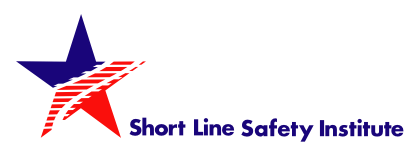Below are links to research and other resources related to safety culture, and the work conducted by the Short Line Safety Institute.
The Short Line Safety Institute (SLSI) conducts an annual review of Safety Culture Assessments (SCA) reports created in a given year. A Federal Railroad Administration (FRA) research results paper titled “Short Line Safety Institute: 2024 Systematic Review” describes the results of that study. SLSI and the FRA analyzed 20 Safety Culture Assessments conducted on short line railroads in 2024, identifying five safety culture strengths across the railroads and five safety culture opportunities for improvement. The report also notes areas of need that can be addressed by SLSI and the institute’s plans for future action based on this year’s review.
Click here to view a copy of the research results.
The Short Line Safety Institute (SLSI) has released a Federal Railroad Administration (FRA) research results paper analyzing the twenty Safety Culture Assessments (SCAs) conducted on short line railroads in 2023, identifying five areas of strength across the railroads and five areas of opportunity. SLSI reflects and takes action on the reported areas of opportunity year-over-year. Actions being taken based on this year’s review are described in the report.
Click here to view a copy of the research results.
This research was presented at the 2024 Transportation Research Board (TRB) Annual Conference, and was conducted by Dr. Julia Leone of SLSI and Samantha Lacey of the University of Connecticut. The research showed that workforce development training, specifically SLSI’s Leading Forward class, can improve safety culture. Over 98 percent of respondents said the class was a worthwhile investment in their career development, and over 95 percent of respondents said they will use their newly learned skills in their current jobs.
Click here to view a copy of the presentation.
This study, conducted by Samantha R. Lacey, MS, University of Connecticut (Storrs); Julia Leone, PhD, Short Line Safety Institute; Janet Barnes-Farrell, PhD, University of Connecticut (Storrs) was presented at the Work, Stress & Health 2023 conference held Nov. 8 to 11. The results of this study bolster and extend previous research, and highlight a modifiable workplace variable, positive norms for civility, that can be targeted to amplify the positive effect of safety climate on safety behaviors and help foster optimally safe work environments in the railroad industry.
Click here to read the study.
Click here to view a video of the presentation.
This study reviewed safety culture improvements across all 10 Core Elements of Safety Culture on twenty railroads, using the initial Safety Culture Assessment result, and the Times 2 Assessment result conducted by the Short Line Safety Institute. Results show that railroads were able to implement 60% of all Opportunities for Improvement recommended, and all twenty railroads experienced measurable safety culture growth across all 10 Core Elements. The study supports the hypothesis that implementation of recommendations from the SLSI results in strengthened safety culture outcomes.
Click here to read the report.
The Short Line Safety Institute practices continuous improvement, regularly measuring to ensure that the most robust model for assessing safety culture in the railroad industry is consistently applied. By assessing its fidelity and examining the practices of its Assessors, SLSI can gain further insight into its robust process. The results show that there is a high Assessor (a person who conducts the Safety Culture Assessment) conformance to SCA protocols and procedures, and there are areas for improvement. SLSI continues to update and manage its protocols to provide the most accurate information to the Assessors, maintain consistency in Assessor behaviors across SCAs, and provides annual Assessor training.
The Federal Railroad Administration has published the Short Line Safety Institute’s (SLSI) 2022 Systematic Review. The objective of the systematic review, conducted annually, is to examine the strengths and gaps in safety culture across the short line and regional railroad industry. The annual systematic review informs SLSI of the industry’s needs as it continues to develop its programs, resources, and service offerings.
Click here to read the review.
A case study conducted by the SLSI and the University of Connecticut in mid-late 2020 uncovered a relationship between how employees perceived their railroad’s safety culture and COVID-19 response. Participants with more positive perceptions of their railroad’s safety culture were more likely to have more positive perceptions of their railroad’s COVID-19 response, indicating value in a railroad having and maintaining a strong safety culture.
Click here to read a summary of the report.
Or click here to view a video about the report.
An analysis of archival survey data conducted by the SLSI and the University of Connecticut suggests that managers have more positive perceptions of safety training quality than non-managers, and that participants employed at smaller railroads have more positive perceptions than those employed at larger railroads. Additional analyses revealed that these perceptions may be reflective of how employees perceive their railroad’s safety values. Taken together, it is important for managers and larger railroads to pay particularly close attention to how employees perceive the quality of their safety training, and that when addressing safety training quality, railroads should keep in mind that these perceptions may be more broadly driven by how employees perceive their railroad’s commitment to safety.
Click here to read a summary of the report.
The Federal Railroad Administration’s Office of Research, Development & Technology has published a report evaluating Safety Culture Assessments that have been completed in 2021 by the Short Line Safety Institute. The report states that 1) there are prominent strengths in safety culture across the short line and regional railroad industry, and 2) there are noteworthy gaps in the industry as well. Further, by assessing safety culture and examining the practices of the short line and regional railroads, SLSI can gain insight into the industry at large. With this information, SLSI can report generally on the needs of the industry and take action to create and offer resources that address identified railroad safety Opportunities. The report notes SLSI’s online Resources, and Leadership Development Training and Hazardous Materials Training programs as examples.
An analysis of railroads who have completed an initial SCA and a follow-up (Time 2) SCA show Safety Culture growth overall, and across all ten Core Elements evaluated.
The Short Line Safety Institute (SLSI) offers a Leadership Development Training (LDT) for interested short line railroads. An assessment of the current training program allows SLSI to learn from its past participants and to continually make improvements to best serve short line and regional railroads across the United States. SLSI conducted an analysis of feedback surveys that were provided to participants in its Leadership Development Training. Across all 218 feedback surveys, more than 97% of participants rated the program activities as valuable, as a worthwhile investment in their career development, and would recommend the program to a colleague in the railroad industry. Participants also provided SLSI with suggestions for improving the program.
The Short Line Safety Institute (SLSI) conducts Safety Culture Assessments for interested short line railroads. An evaluation of the current Safety Culture Assessment program allows SLSI to learn from its past participants and to continually make improvements to best serve short line and regional railroads across the United States. SLSI conducted an analysis of feedback surveys that were provided to participants in its Safety Culture Assessments. Participants provided positive feedback about the program, and also provided SLSI with suggestions for improving the program.
The Short Line Safety Institute (SLSI) conducts Safety Culture Assessments on short line railroads, and also conducts an annual Systematic Review of the assessed railroads to measure industry trends and identify opportunities for improvement in safety culture. Results of the 2020 Systematic Review suggest that both the quality and quantity of railroad safety communication can be improved. In response to these findings, SLSI launched a Safety Poster Program which provides interested railroads with safety posters on a quarterly basis free of charge. SLSI also aims to assist railroads with other aspects of their safety communication quality and quantity, such as possible barriers to effective communication. Thus, the goals of this paper is to highlight potential obstacles associated with safety communication, provide tips on how to overcome the obstacles, and educate the industry on the importance of clear and frequent safety communication.
This report summarizes findings from a systematic review of the nine SLSI Safety Culture Assessment Reports created in 2020, and discusses industry trends in the strengths and gaps related to safety culture practices. These strengths (e.g., employees feel empowered to work safely) and gaps (e.g., a lack of formal safety concern reporting systems) provide insight to and indicators of the status of safety culture in the short line and regional railroad industry. The report demonstrated that SLSI is equipped to help railroads address current industry gaps and assist railroads in developing systems they need for creating a strong safety culture. Lastly, this report highlights new ways for SLSI to continue to serve the rail industry.
Research Results Paper which evaluates the perceptions of the Hazardous Materials Training Program by past participants.
Research Results Paper which evaluates the effectiveness of the Short Line Safety Institute’s Hazardous Materials Training Program.
Research Results Paper suggest that Commuter Operations would benefit from SLSI’s services. Additionally, results suggest that SLSI’s SCA process is easily transferable from freight to commuter railroads with minor revisions.
Research Results Paper that suggests that the ‘SCA process and follow-up support hold promise for strengthening railroad safety culture.
Research Results paper about the early outcomes across railroads that participated in a Safety Culture Assessment (SCA).
Research Results paper about the SLSI’s model for conducting Safety Culture Assessments (SCAs).
Research Results paper about the status of safety culture in the short line and regional railroad industry.
U.S. Department of Transportation Safety Council’s paper regarding the importance of safety culture in the transportation industry.

